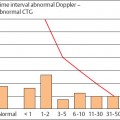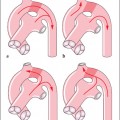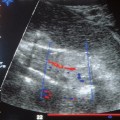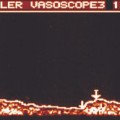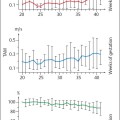13 | Possible Applications of Doppler Ultrasound in Fetal Anemia |
In spite of successful anti-D prophylaxis and other monitoring strategies, fetal anemia continues to pose a problem for the obstetrician. New developments, especially in ultrasound, have brought major changes in diagnosis and treatment. The diagnostic process has become highly specific because percutaneous umbilical blood sampling allows direct access to fetal blood. Treatment is more successful than ever as a result of intravascular transfusion, even in cases that previously appeared to be hopeless. Thus, with sufficient experience, invasive diagnostic and therapeutic procedures make possible specific and—corresponding to verifiable paradigms—planned and properly adjusted procedures with a calculable risk.
Diagnostic procedures when fetal anemia is suspected involve noninvasive, and lately again more and more invasive means. The need for accurate and reliable diagnosis, relevant for management, is opposed by the need to keep the pregnancy intact. However, demands for the safety of the pregnant woman are increasingly met even in invasive procedures. This is due to technical developments, especially in sonography, and increasing experience with invasive methods in larger centers. In what follows we will discuss the applications of noninvasive diagnostic methods.
Noninvasive Procedures for Suspected Fetal Anemia
These include procedures that do not affect the integrity of the pregnancy:
 The antibody titer in corresponding blood incompatibilities provides a rough indication whether problems for the fetus can actually be anticipated.
The antibody titer in corresponding blood incompatibilities provides a rough indication whether problems for the fetus can actually be anticipated.
 The zygosity of the blood group of the partner with respect to the relevant antigen is an indication whether the problem is uniformly present or may not be significant for the current pregnancy.
The zygosity of the blood group of the partner with respect to the relevant antigen is an indication whether the problem is uniformly present or may not be significant for the current pregnancy.
 If the cardiotocogram (CTG) shows tachycardia, a silent type oscillation, or deceleration, this is interpreted as impaired oxygenation.
If the cardiotocogram (CTG) shows tachycardia, a silent type oscillation, or deceleration, this is interpreted as impaired oxygenation.
 However, ultrasound, including both imaging and Doppler ultrasound, is the core noninvasive procedure.
However, ultrasound, including both imaging and Doppler ultrasound, is the core noninvasive procedure.
Ultrasonic Imaging
Table 13.1 shows the hemodynamic consequences of fetal anemia.
Ultrasonic imaging can determine the sequelae of fetal anemia, including cardiac output, increased hemolysis, or a resulting reduction in protein neogenesis. Admittedly most indicators only hint at the “true” situation and are somewhat imprecise. Table 13.2 summarizes these indicators of fetal anemia and their pathophysiological significance.
Table 13.1 Hemodynamic consequences of fetal anemia
Cardiac output ↑ – Blood flow velocity increased: heart enlarged ↑ – Vessels dilated: arterial compliance ↓ – Renal perfusion ↑ : polyhydramnios |
Blood viscosity ↓ |

